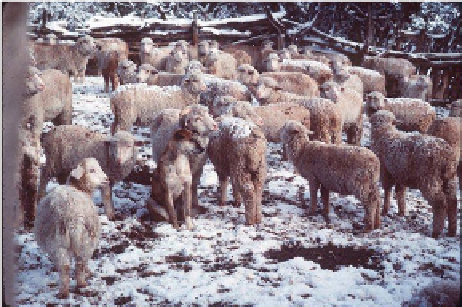Biology Reference
In-Depth Information
discussion of corrective methods for such animals, and there is a matter-of-
factness worldwide about what to do if animals misbehave around stock.
Mortality specifically related to livestock-guarding dogs is discussed by
Lorenz et al. (1986)
and
Marker et al. (2005)
. Most deaths were those that
could happen to any dog anywhere. One category in
Lorenz et al. (1986)
included “getting lost” (40% of accidental deaths). In this case dogs are lost
to the system but not necessarily dead. Within migratory sheep flocks this
represents a differential mortality.
Evolution
Livestock-guarding dogs are local adaptations to pastoral communities, and
hence they are known as landrace dogs. Because livestock-guarding dog
behavior is perceived by pastoralists as beneficial to human endeavors, the
dogs receive more feed and care from humans than do local village dogs.
The resulting interactions can lead to local diversification (larger size and
distinctive color patterns) and a differential mortality. The symbiotic rela-
tionship could be described as mutualism.
The question is, what leads to their distinctive guarding behavior? The
behavior that distinguishes good (i.e. attentive, trustworthy, and protective)
livestock-guarding dogs results primarily from two processes: raising pups
during their critical (sensitive) socialization period in proximity to sheep or
other livestock, and removing animals that are inattentive to the stock and/or
are disruptive of livestock. Because of the pastoral village economy,
livestock-guarding dogs are likely to be born and raised close to or in with
the livestock. Livestock-guarding dogs not raised with livestock during the
post-neonatal period rarely can become attentive to them (
Coppinger et al.,
1983
).
FIGURE 6.3
Navajo village dog, which has developmentally acquired livestock-guarding
behavior towards sheep. Photo credit: Ray Coppinger




Search WWH ::

Custom Search